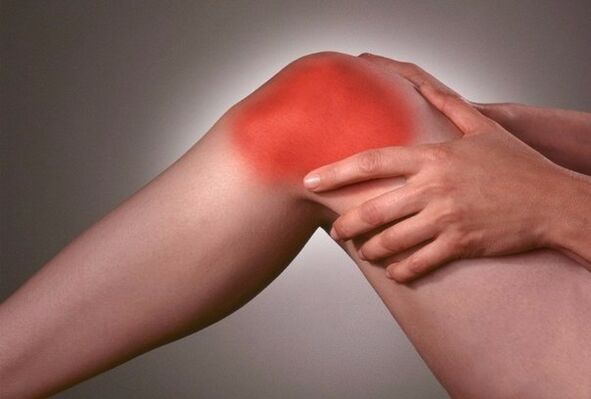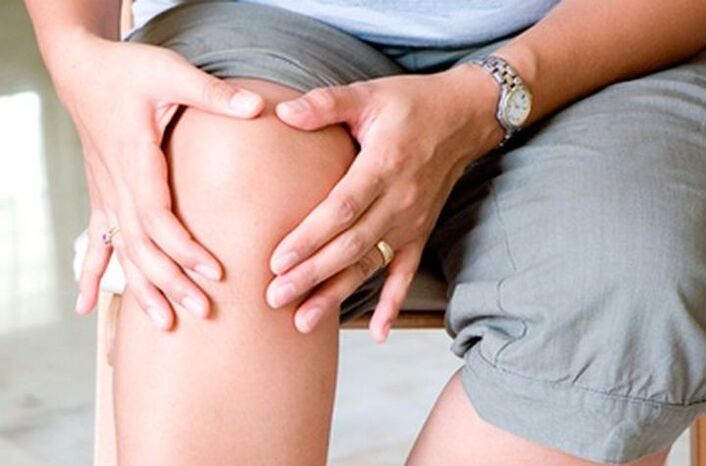
Osteoarthritis is a pathological process characterized by dystrophy and degeneration of articular cartilage. As a rule, the problem is not limited to cartilage - it then spreads to the subchondral bone tissue located under the pathological cartilage. Therefore, osteoarthritis is also called osteoarthritis. And because all of these disorders eventually lead to changes in the structure of the joint, this process is called deforming osteoarthritis, which can affect any joint. In clinical practice, arthrosis or gonarthrosis of the knee joint is often noted.
The essence of pathology
In terms of frequency and prevalence, osteoarthritis of the knee is second only to osteoarthritis of the thigh joint (coxarthrosis). To find out why, it is worthwhile to dwell briefly on the features of the anatomical structure of the knee and the functions it performs. It is one of the most massive joints in the formation of 3 bones - the femur, tibia and patella. Thus, it is a complex combination of 2 joints - patellofemoral and patellofemoral joints.
The joint surfaces of all 3 bones are covered with cartilage, which facilitates movement in the joint and protects the subchondral bone tissue from mechanical wear. In addition to the articular cartilage itself, there are menisci in the knee - paired cartilaginous joints increase the alignment (anatomical alignment) of the articular surfaces. Joint cartilage does not have its own blood vessels. Its feeding is carried out diffusely by intraarticular (synovial fluid). Like a sponge, cartilage shrinks under mechanical stress during movement, carrying heavy loads. At this point, waste products from the cartilage tissue are released into the surrounding synovial fluid. On the contrary, at rest, the synovial fluid and the nutrients it contains penetrate the knee cartilage at rest.
Nutrition of the articular cartilage of the knee joint is impaired for a number of reasons, leading to osteoarthritis of the knee. At the same time, there is a lack of nutrients in the cartilage tissue - chondroitin sulfate, glucosamine, calcium and other trace elements. Moisture is lost. This is a process of dystrophy, followed by degeneration - thinning of the articular cartilage. In turn, these negative processes lead to structural and motor disorders in the knee joint.
Knee arthrosis is often mistaken for salt deposition. Let's say that some mineral salts, including table salt, accumulate in the form of microcrystals in the joint space, which causes pain and movement disorders. This is not true. As can be seen, a completely different process takes place for the deposition of salts. In response to the destruction of articular cartilage in the subchondral bone, marginal bone growths - osteophytes - are formed to stabilize the knee at least to some extent. However, in the future, osteophytes only aggravate osteoarthritis and contribute to further destruction of cartilage.
Reasons
The causes of osteoarthritis of the knee joint are different and can be pathology of the knee itself or other diseases and metabolic disorders. In this regard, gonarthrosis can be primary or secondary. The mechanism of primary osteoarthritis is not fully understood. In this case, the disease is believed to be caused by a combination of the following factors:
- Advanced age, when degenerative changes occur not only in the articular cartilage, but also in all organs and tissues;
- Excess weight, which increases the mechanical stress on the joint;
- Physical inactivity or, conversely, excessive physical activity;
- Some congenital anatomical disorders of the knee in which the articular cartilage and subchondral bone are initially altered;
- General metabolic disorders that cause changes in the mineral content of synovial fluid.
Secondary arthrosis of the knee joints is a complication of other diseases. Often such diseases are arthritis of various natures - gout, rheumatic, rheumatoid, septic, tuberculosis, etc. In these diseases, various pathological factors (infection, impaired immune reactions, uric acid crystals) cause inflammation of the so-called synovial membrane. synovitis. Synovitis is definitely accompanied by a deterioration in the quality of synovial fluid, which in turn leads to osteoarthritis.
Another common cause of osteoarthritis is knee injuries. Posttraumatic osteoarthritis of the knee joint is the result of intra-articular fractures of the femur and calf bone, hemarthrosis (joint bleeding), damage to the knee ligaments and meniscus. It is based on pathological mechanical factor (damage) and subsequent damage (arthritis). In addition, osteoporosis is often accompanied by osteoarthritis. Calcium deficiency in the bones leads to the destruction of not only bone but also cartilage tissue.
Symptoms

The main symptoms of osteoarthritis of the knee joint:
- Pain;
- Disorders of knee movement;
- Difficulty walking;
- Cracking while moving;
- The first - pathological tension, and then - muscle atrophy of the lower extremities;
- Deformation of the knee joint.
Initially, the patellofemoral joint, which usually makes up the bulk of the functional load, suffers. In general, osteoarthritis knee pads are probably the most sensitive. Dystrophic changes in osteoarthritis begin in the cartilage of the knee cap. Clinically, this is manifested by swelling and pain when you feel this bone. As a result of dystrophic changes, articular cartilage undergoes sclerotic changes - it loses its elasticity and is replaced by coarse connective tissue.
Later, the articular sac and the garden apparatus undergo sclerotic changes. The joint configuration changes. Initially, it becomes swollen and inflamed due to the accompanying arthritis. Subsequently, with the progression of degeneration and sclerosis, the amount of synovial fluid decreases sharply, the joint space narrows, which inevitably leads to movement disorders. At first, walking becomes difficult, and the surrounding muscles become tense. Then ankylosis develops - complete immobility of the knee and, consequently, atrophy of the muscles of the thigh and lower leg. All these changes take shape over a long period of time. In this regard, there are 3 degrees of osteoarthritis:
- Grade 1 osteoarthritis of the knee joint. The pain is mainly localized in the area of the knee cap and along the inner surface of the knee joint. Pains are "beginning" - they appear at the beginning of the movement, and then subside. Also, the pain may appear with considerable effort (long walks, weightlifting) and disappear after rest. There are no structural changes in the merger at this stage.
- Grade 2 osteoarthritis of the knee joint. Pain can occur even at rest and can be bothersome for a longer period of time. Limits of range of motion (contractures) appear in the knee. The patient is lame and has to move with a stick. Inflammatory and dystrophic changes occur in the joint, externally manifested by an increase in the knee due to edema.
- Grade 3 knee arthrosis. Severe knee pain that does not stop even after a long rest. Serious irreversible disorders in the structure of the joint, leading to ankylosis and loss of mobility. The change in the configuration of the entire lower extremity is manifested by its curvature of the valgus or varus (O or X shape).
The diagnosis of osteoarthritis of the knee is made on the basis of the above symptoms and complaints of the patient, as well as X-ray data (narrowing of the joint space, osteophytes, osteoporosis, hardening of the bones). Gonarthrosis is treated in a complex way with the use of drugs and physical procedures. Surgery is indicated for grade 3 osteoarthritis, during which various types of knee joint plasticity are performed.















































